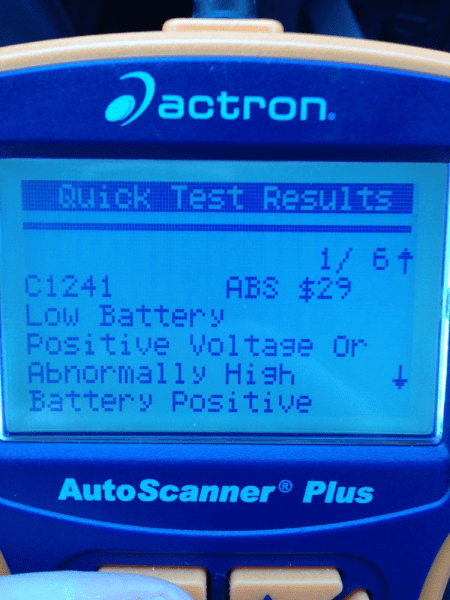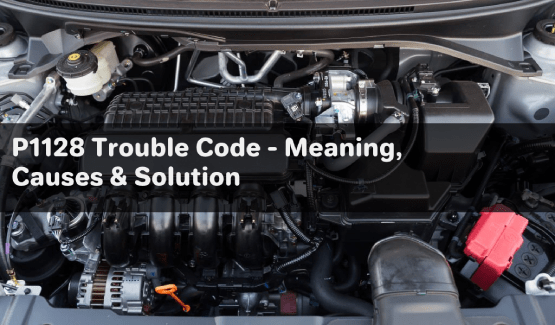Your Subaru starts acting weird. You grab the scan tool, plug it in, and read a P2096 trouble code. What now? This article will discuss the possible causes, how to diagnose and eventually fix your car.
The P2096 typically pops up when the engine is running too lean. This can be caused by a faulty oxygen sensor, a misfire condition, an air leak, or low fuel pressure.
A combustion chamber uses a mixture of air and fuel to generate power. If more fuel is present than air, the engine is said to be running rich otherwise, it will be called running lean. In short, the engine can either run lean or rich, and it has to do with the air-fuel ratio.
Now running lean is our end goal, but how lean is lean enough. We can not have too lean a mixture running engine. This can lead to decreased performance and potential engine damage in the long term.
In either case, there are several things you can do to correct the issue. Dive in to know all about the causes of the P2096 diagnostic code and how to fix it.
What Does P2096 Code Mean?
The efficiency of catalysts is directly related to the rate of oxidation of hydrocarbon emissions. The PCM makes a comparison of the output of front and rear sensors.

A front oxygen sensor will display a higher frequency. This is due to the A/F compensation and rich-to-lean combustion. Thus, the rear sensor will display a lower frequency. This remains the situation before the catalyst doesn’t wear out. Once the catalyst is oversaturated with oxygen, it will wear.
Subsequently, the frequency of CO and hydrocarbon conversion to CO2 and H20 will be reduced. Thus, the traces of both the sensors will begin to have the same frequency.
This will result in displaying the P2096 code.
Meaning of P2096 Code on Your Subaru
Before plunging in to understand what the P2096 code means, you need to understand the following terms.
Powertrain Control Module: PCM’s main task is to monitor the oxygen levels in the exhaust gas and make adjustments to the air-to-fuel ratio accordingly.
This is done by reading signals from two oxygen sensors, one located in front of the catalytic converter and one located after the converter. The signals from these sensors are used to calculate the air-to-fuel ratio, which is then sent to the PCM as an input.
Air fuel Mixture: The air-fuel mixture determines the ratio of air to that of the fuel. It determines how the engine runs and how efficiently it runs.
The air-fuel mixture needs to be just right so that the engine can run smoothly and without any problems. If the mixture has too much fuel, then the engine is running too rich, If the mixture has too much air, it is too lean.
Do You Need to Worry About a P2096 Code?
A P2096 diagnostic code is a serious one. You can still drive for the near term after this code pops up. However, you should get it fixed as fast as possible.
Ignoring this can lead to decreased performance of the vehicle’s engine. Further, you can expect poor fuel economy, knocking, and other issues.
It is best to get on the diagnosis as soon as the code shows up.
P2096 Trouble Code – All the Symptoms You Will Experience
There will be several noticeable symptoms corresponding to the P2096 code. Read through to know the most common ones.
Engine Running Rough
One of the symptoms of the P2096 code may include rough running. You will experience difficulty accelerating or a misfire. Further, your car goes through rough idling. The engine may sputter or vibrate excessively. If you are noticing any of these, it is possibly due to your engine running rough, a potential symptom of P2096.
Knocking
Another frequent symptom is knocking. You might hear a loud pinging noise which might be due to a P2096 trouble code.
Catalytic Converter going Red
The catalytic converter needs to be in proper condition to convert the hydrocarbons to H20. This will keep the engine running smoothly. However, if you notice that your catalytic converter has gone red, it indicates that its performance has deteriorated. This is another common symptom.
Poor MPG
Due to the incorrect proportions of air and fuel in the mixture, your engine won’t be as fuel efficient as before. You will notice a drop in the MPG whenever you get the P0296 diagnostic code. The DTE will be lower compared to before when the car was running prope
What Can Cause a P2096 Code?
Subaru’s P2096 code is caused by several factors that can make the car less efficient and more susceptible to problems.
The most common issues are with the car’s emissions system, but other problems can include the air suspension, power steering, and various sensors.
It is important to get a detailed insight into the typical causes of this code to diagnose it.
Clogged Catalytic Converter
Dirt and debris can clog the catalytic converter. This is one of the leading causes of the P2096 code. It can cause difficulty accelerating. Furthermore, it will also result in a lack of a pathway for the exhaust gas.
Diagnosis
- The catalytic converter will turn red.
Reduced Fuel Pressure
Another potential cause of code P2096 is reduced fuel pressure. It might be due to a lot of reasons. One of the most common is a bad fuel pressure regulator.
This part regulates the amount of pressure that is sent to the fuel injectors, and if it’s not working properly, it can result in all sorts of issues.
Diagnosis
Following are some of the symptoms which indicate reduced fuel pressure.
- Your car won’t start
- It turn off immediately after starting.
- You’re experiencing engine hesitations or stalls
- Your car has low power or is sluggish
Vacuum Leak
One reason for P2096 is a vacuum leak. This happens when there is too much air getting into the combustion chamber, resulting in a lean mixture. The air causes the fuel to burn less completely, which can lead to problems like poor performance and emissions.
Diagnosis
- You can diagnose a vacuum leak using a vacuum gauge.
- With the engine running, hold the gauge up to the intake manifold and see if it registers any reading at all.
- If there’s no reading, then there’s likely a vacuum leak somewhere.
Deteriorated Oxygen Sensor
The oxygen sensor is responsible for measuring the oxygen content in the exhaust gas and sending this information to the engine’s computer. If the oxygen sensor is not working properly, it can cause the engine to run too rich or too lean.
Diagnosis
- One way to tell if the oxygen sensor is bad is to check its output voltage.
- The output voltage should be between 0.1 and 0.9 volts.
- If the voltage is outside of this range, it indicates that the sensor is not working properly.
- Another indication that the sensor may be bad is if there is a significant difference in the output voltage when the engine is cold and when it is hot.
Misfire
A misfire is incomplete combustion of fuel in the engine, which is a common cause of P2096. This can cause a decrease in performance and decreased fuel economy. Additionally, it can cause damage to the engine.
Diagnosis
If there is a misfire, you will read additional trouble codes.
- P0300: Indicates multiple misfires
- P030X: Misfire in a certain cylinder which is indicated by the letter X.
Exhaust Leak
An exhaust leak is a hole or a crack in the exhaust system. It can be caused by corrosion, a manufacturing defect, or damage from an accident. It is a potential cause of P2096, resulting in poor engine performance.
Diagnosis
- The first step is to check your exhaust system for visible damage.
- Look for holes, dents, or cracks in the tubing or muffler.
- If you see any damage, it’s likely that the leak is caused by one of these defects.
- Visit a repair shop that is able to weld your exhaust.
Issues with Airflow Sensor
The airflow sensor can be affected by a number of factors, including dirt, oil, and water. If the airflow sensor becomes dirty or wet, it may not send an accurate signal to the computer. This can cause the computer to inject too much or too little fuel into the engine, which can result in the popping up of the P2096 code.
Diagnosis
Diagnosis of the dirty airflow sensor is not easy. However, you can rely on the following
- Check the vacuum lines for cracks or leaks
- Check Engine Light may come on as well
- Notice rough idle, stalling, and decreased fuel economy.
How to Fix The P2096 Code – All Potential Solutions
In order to fix P2096, you need to properly diagnose what the issue is. After you have dug into the root of the problem, it is time to fix the issue.
Read through to know potential solutions that will totally fix P2096.
Diagnosis
Before moving on to the potential fixes, make sure to clear the OBD2 scanner. Connect this scanner to the OBD2 port provided in your vehicle. Now, run the tests. This will indicate the true source of the P2096.
Potential Fixes
- Replacing oxygen sensor
- Replacing spark plug
- Changing fuel filter
- Changing fuel pump
- Replacing the pressure regulator
- Changing catalytic converter
- Replacing vacuum hoses
How to Prevent It from Happening in the Future?
Once you have diagnosed the issue and applied the relevant fix, it is important to make sure to prevent it. Proper car maintenance will assist in keeping off P2096 from showing up. One should:
- Check the wires of your vehicle on a regular basis
- Check the exhaust for leaks
- Check if any of the sensors are loosened
Zohan writes repair manuals and technical documents for multiple automotive publications. He helps create visual guides and instructions for dealership techs and savvy car owners. Zohan collaborates with engineering teams to ensure the repair manuals accurately reflect the vehicle designs. His manuals are valued for their clear organizational structure, step-by-step visuals, and focus on safety.









